Police vehicles to remember from pushbikes to 'jam sandwich' cars
The first police motorbike in the UK was introduced to the Metropolitan Force in 1921.
On the 103rd anniversary of that auspicious day, BBC London takes a quick (but within the speed limit, obviously, officer) look at some of the top cop-conveyancers over the years.
Bicycles, horses (alone and with carriages) and good old Shanks's pony have all been deployed in the pursuit of crime.
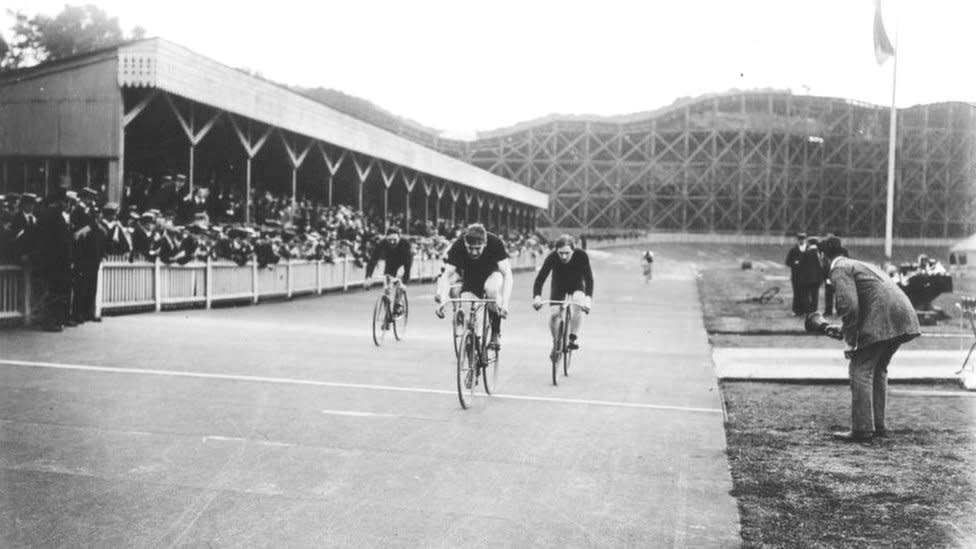
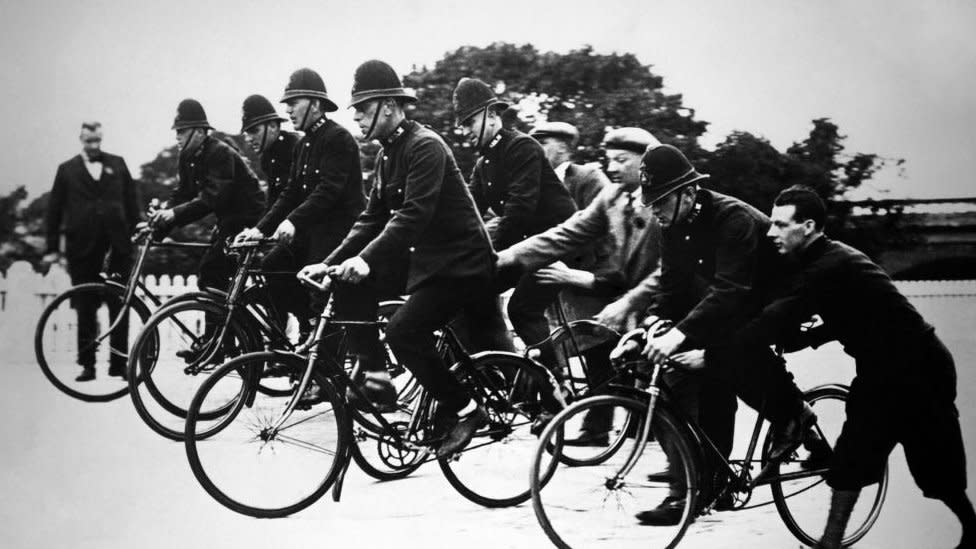
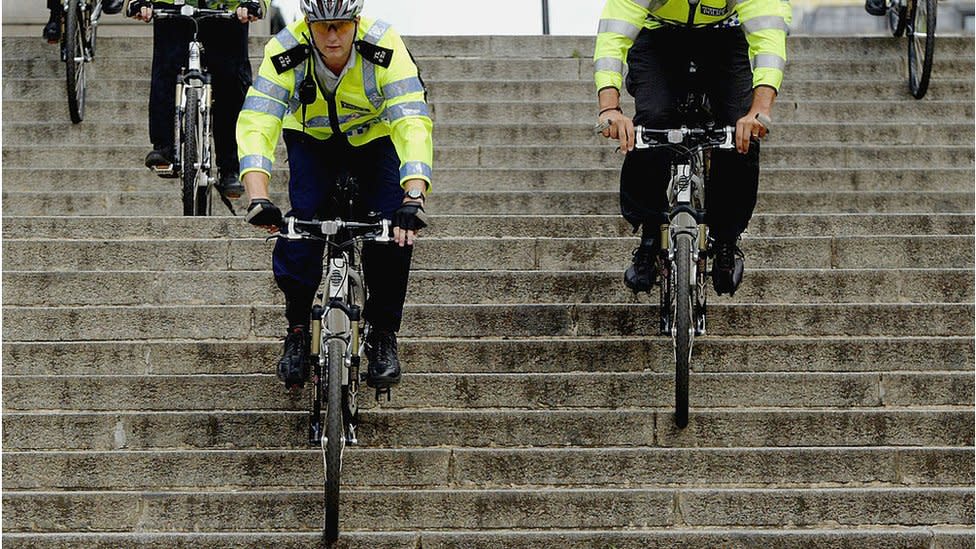
Bicycles were understandably popular for chasing after the fleet-of-foot criminal classes, but the handlebar heroics spread further than the mean streets.
The City Police Sports Day, held at Crystal Palace, was both a chance to earn kudos for sporting prowess - and get in a bit of training that would help the day job.
Other events included running while blowing a whistle and waving a truncheon, and the triple "'ello".
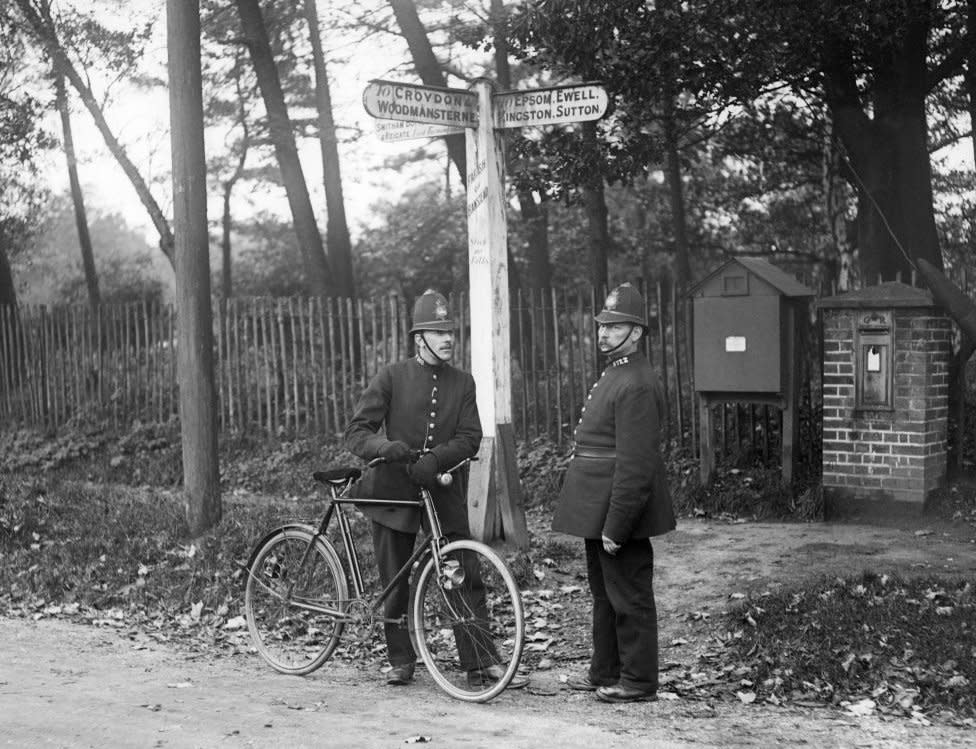
Whether screaming past in fast response, parked up at the edge of a road or driving at a steadfast 69mph on the motorway (before coming off every junction to get the traffic flowing again), the sight of a police vehicle is not uncommon for most of us.
So moving from pedal power to petrol power, the motorbike was a game-changer. Not only useful for zooming around the capital, skilled riders could participate in officially-organised near-misses with their fellow enthusiasts.
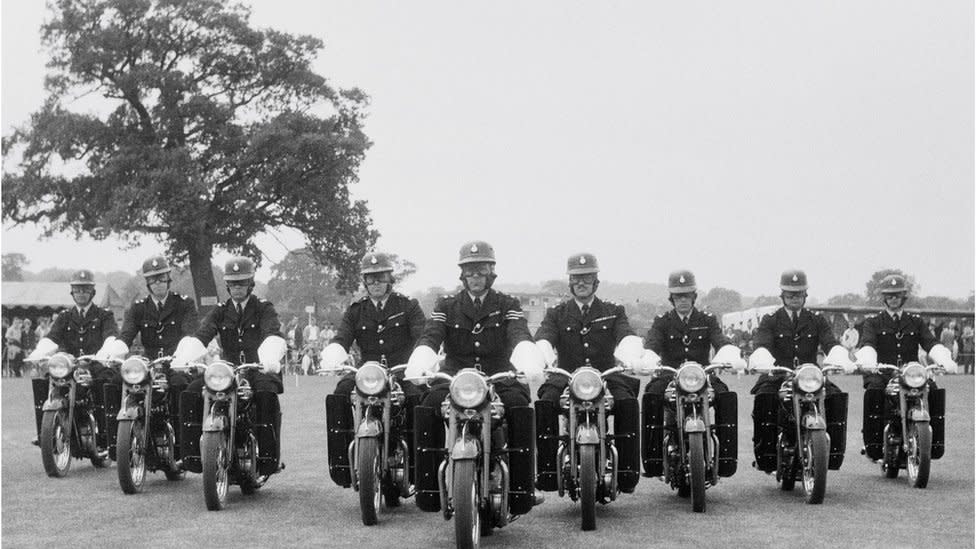
Less nippy than an individual machine, but making up for its cumbersome makeup with its Noddy-esque appearance, three officers would pack into this bike and sidecar - one to drive and two others to wield cameras to get evidence at road crash scenes.
It is not known if the trio provided too great a distraction for other motorists as they went about their duties.
Police thoroughly embraced the motorcar, and improved upon the basic models.
In the mid-1930s, a sign, saying STOP POLICE could be deployed from the driver's seat to unfurl in the rear window - and a few years later, a police van with a giant loudspeaker on top would take to the roads in foggy weather so officers could bellow safety tips to drivers and pedestrians.
The shouty van was tried out on Kensington Church Street one misty morning.
The loudspeaker was manned by microphone attendants, who issued instructions to both traffic and pedestrians as required, if, in the words of a police official, "they need instruction".
It was reported at the time that in some cases "the driver of a vehicle will be stopped and given a lecture on road manners and public safety".
Pedestrians were also liable to these lectures.
Loudspeakers packed away, another car with a novel accoutrement was tested by the Met in 1946 as they train to "take down a bandit".
An armoured Chrysler Airflow car had ports for guns and two-inch bullet proof glass. The exercise also included running the baddie's car off the road and capturing him.
In a contrast to the gangster-thwarting bulletproof Chrysler, the late 1960s saw cute little cars suitable for pootling about Toytown.
The Ford Anglia 10SE patrol car was intended for use by single-man crews.
Who knew the late Queen was a police car fanatic? The Met obviously, as in 2006 a birthday treat was provided for Her Majesty in the form of having 80 British-made cars parked outside Buckingham Palace, including a 1976 Rover SD1 3500, (and attendant three policemen).
The Queen also had a birthday walkabout in Windsor which attracted crowds of 20,000 people - and a private dinner at Kew Palace with her family which featured a spectacular fireworks display.
Which sounds much nicer than having nearly 100 vehicles in her back yard, like a time-slip carpark.
The Met, which publishes its fleet list, now consists of vehicles made by Mercedes-Benz, Vauxhall, Ford, Nissan, Mitsubishi, BMW and Yamaha.
Sadly, no sidecars.
Listen to the best of BBC Radio London on Sounds and follow BBC London on Facebook, X and Instagram. Send your story ideas to hello.bbclondon@bbc.co.uk
